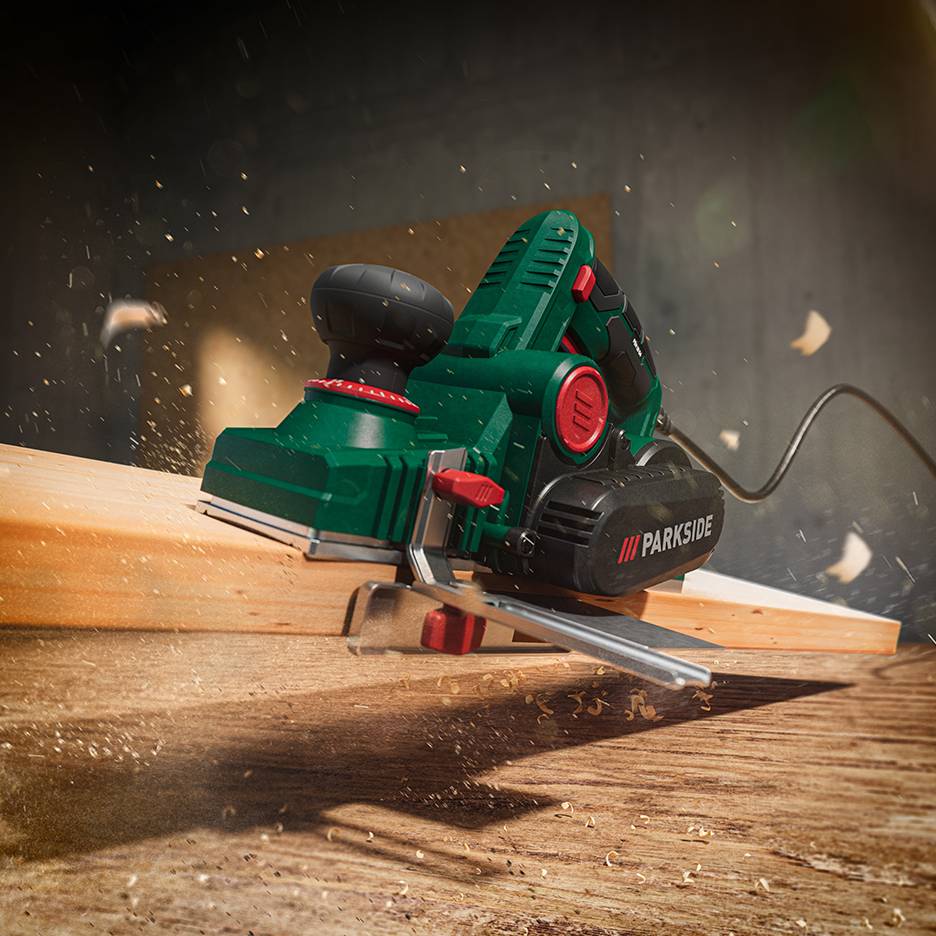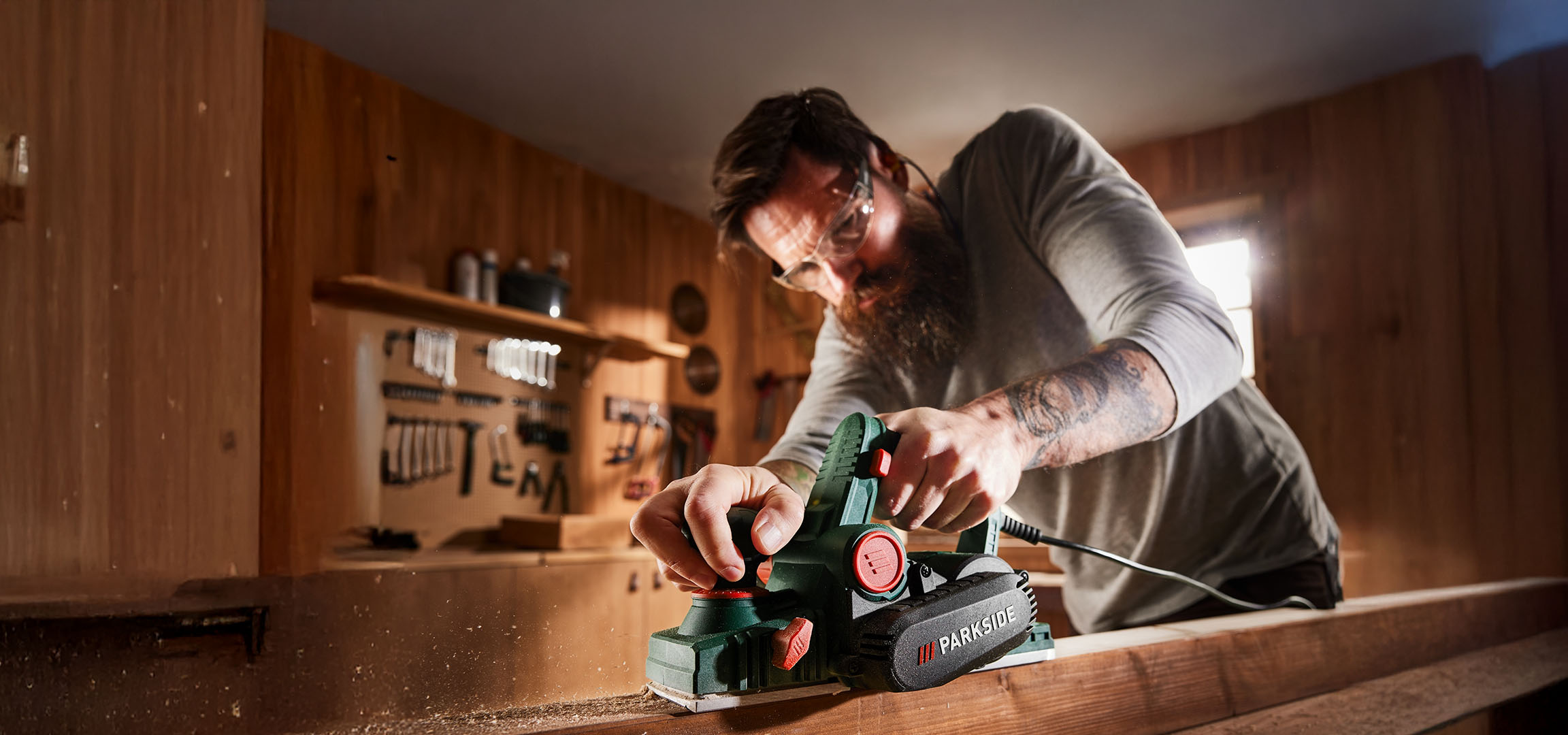Correct planing: This is where shavings fall
Planing, like drilling or sawing, is a woodworking technique used for levelling and smoothing surfaces. Nowadays, not only hand planes but also modern electric planes are used for these work steps.
This article provides you with practical tips, step-by-step instructions for planing straight wooden surfaces and answers to the most frequently asked questions about planing so that you are prepared for all eventualities.
Would you like to set your planer blade correctly or simply sharpen it to achieve particularly good results? Then take a look at our other articles on the subject of planing!

The planer: A definition
A planer is used to remove chips from the surface of a workpiece. For example, different types of wood can be planed flat, material thicknesses reduced or surfaces smoothed.
There are basically three different types of planer: wood planes, metal planes and electric planes, all of which have the following basic elements:
- Planer body: The sole of the plane guides the blade or plane iron, which removes the chips.
- Plane iron or blade: The blade cuts chips from the material and "chips" it.
- Clamping device: It fixes the plane iron.Wood and metal planes are hand planes.
However, these are not named after the material to be processed, but differ in the structure of the planer body. The wood plane consists of a wooden structure, whereas the body of the metal plane is made of tool steel. The electric planer is driven by an electric motor with a toothed belt and works in a similar way to a milling machine. It has two or more blades that remove material quickly and precisely. All three devices are ideal for planing.
Info
The hand planer is a tool for complex, fine woodwork, such as furniture making. The electric planer is well suited for rough work such as planing planks and floorboards.
4 tips for correct planing
With a few tips and tricks, various types of wood can be easily processed with both a hand plane and an electric plane.

Tip 1: Check the tool
Sharp planing knives or plane irons are essential when planing so that the wood fibres are not torn off but cut off precisely. The blade should therefore be removed from the surface as soon as it becomes uneven. If the blade is uneven, it must be resharpened. A combination stone with a grit size of 1000 to 6000, for example, is suitable for this purpose.
Electric planers are usually equipped with interchangeable blades that can be reversed as soon as they become blunt. They are not resharpened, but replaced when they are worn out.
Tip 2: Choose the cutting angle to suit the material.
The cutting angle refers to the angle between the cutting face of the blade and the surface of the wood. It is adjusted for different types of wood when planing:
Wood type | Angle |
|---|---|
Softwood | 35°-45° |
Hardwood | 40°-55° |
Tropical wood | 50°-65° |

Tip 3: Do not remove too much material
In order to achieve an even surface, do not remove too much material at once. The planing blade can be set to a low removal rate of 1.5 mm for this purpose. The surface is processed in several passes to achieve an optimum result. Planing depths of 2.0 to 3.0 mm, on the other hand, are useful when bevelling edges.
Tip 4: Guide the planer
When planing, it is not just the arms and hands that work, but the whole body. A firm stance at the side of the workbench supports the development of force. With every movement, the entire momentum of the body is utilised. The planer should be guided with little pressure at the beginning. The pressure is only increased at the end of the movement.
Questions & Answers
The right technique is crucial when using a hand planer. Although the work requires more power and time compared to an electric planer, the surface result benefits. Planing large surfaces is much quicker with an electric planer, but the result is generally less fine. In addition, fine lines at right angles to the planing direction, so-called planing strokes, can appear on the surface if used incorrectly.
Conclusion
Planing is purely a matter of practice: the more often, the better the results. In comparison, using a hand planer requires more practice than using an electric planer, which can be used to process large surfaces quickly and effortlessly. For many DIY enthusiasts, it therefore makes sense to have both a small-format hand planer and a practical electric planer in the tool cupboard.

